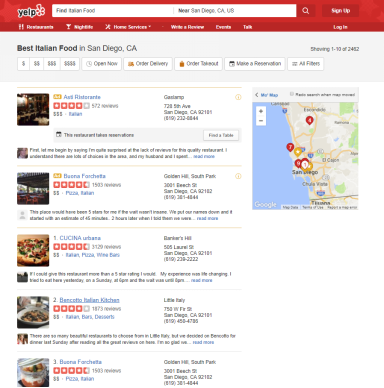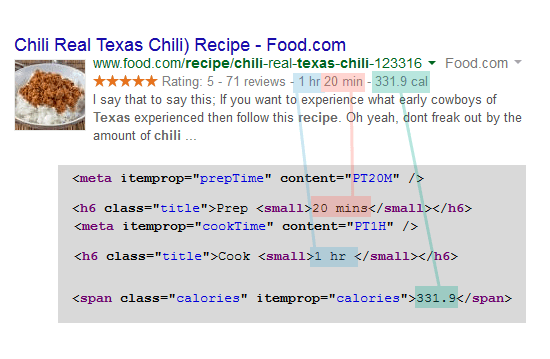Appearing in local searches is something businesses need to be taking very seriously. The rise of mobile has made this concept even more prevalent. In fact, a study by Google found that 88% of ‘near me’ searches were conducted on a mobile device.
It’s important to realize that ranking on a local search (in any capacity) is no overnight job. Local SEO is extremely competitive and when it comes to any sort of SEO strategy, there is one thing to keep in mind: it changes constantly.
There are many different factors that come into play when etching out a name for yourself in the local market. Here are eight fundamental steps to get you started.
Prioritize titles and meta description tags
Titles and meta description tags are customizable elements that let users know what your website, or webpages, are about. Remember, most users scan the results of online searches very quickly, so these descriptions should be concise and easily absorbed.
When looking at title tags:
- The typical title length is between 50 and 60 characters
- Meta descriptions are between 160 and 200 characters
- Each word needs be used strategically to give the user exactly what they want to know.
If you use WordPress, you can easily preview and analyze the descriptions of your web pages using the Yoast SEO Plugin.
If you want to attract local searches, be sure to include the name of the city or geographic area that you are targeting and try to position the keyword as near to the beginning as possible.
Writing titles and meta descriptions is an art form: you need to make every single element matter.
Use online directories and citations
Businesses now have access to all sorts of high-traffic online directories, including:
- Citysearch
- Angie’s List
- YP.com
- Yelp.
Getting your business listed on these sites is one of the best ways to improve local rankings. The primary bits of information to register are:
- Business name
- Address
- Phone number
- Website URL
- Hours in operation
- Services offered
- Credentials
- Photos.
Be sure to update these accurately and consistently across the respective directories. Any errors or differentiation that make the information tough for Google to determine can have serious negative effects.
Google My Business: claim and optimize
Other than the major directory sites, one of the most important things local businesses can do is claim their company on Google My Business. If properly optimized, this is an incredible opportunity to gain exposure on the Google 3-Pack.
The verification process is simple. Google will send you a PIN to verify your business, then all you need to do is log in to Google My Business and enter the PIN number. This proves to Google that your business is legitimate. Once verified, you can optimize your description and all the necessary information to help customers learn more.
Actively pursue online reviews
It’s no secret that online reviews play a big role in purchasing decisions these days. In fact, studies have found that 84% of consumers trust them, just as much as personal recommendations.
Google also recognizes their importance and factors them into your rankings. Therefore, getting positive reviews needs to be something you are consistently pursuing. Keep in mind that you may need to ask customer to complete a review. You should also consider doing the following:
- Outline your goals. How many reviews do you want each month?
- Determine KPIs
- Identify effective ways to follow up with customers for reviews
- Know how employees/customer service will factor in
- Have an approach to continuously optimize.
Software solutions like Trustpilot, Vendasta, and Get Five Stars are great for gaining and managing online reviews.
Social media and Google are the primary channels people look to in terms of reading reviews.
Your business’ Facebook and Google My Business pages are the two areas in which you should be focusing the bulk of your efforts – as reviews here are influential in boosting online visibility.
Produce local content
If you want to rank locally, you must produce high quality content that pertains to your area of operation. This can be through blog posts, online Q&As, or any other type of page that is specific to the local area. For written content, it’s best to keep the length in the ballpark of 1000 words.
When writing content, there are a number of factors to think about:
- Understand your ideal customer
- Know when and where they consume content
- Align with the buyer’s journey
- Keep your messaging consistent
- Publish at a steady pace
- Promote across your channels.
If you have a number of different locations, it’s a wise move to set up separate landing pages for each.
Creating and distributing branded content is one of the key methods for differentiating yourself in the market. With whatever you produce, be sure your messaging is relevant, informative, and actionable.
Use local structured data markup
Structured data markup, or ‘schema markup’, is a code added to your website that gives the search engine robots the necessary information about your business. This can be in relation to the products or services you offer, reviews, or what your content is about, for example.
As barely 30% of the businesses do this, adding appropriate markup is one of the best ways to make a local business stand out among the crowd. Google has a user-friendly testing tool that allows you to check your markup and ensure it’s implemented correctly. Google’s Data Highlighter also makes this process even easier.
Local SEO is all about making life more convenient for the users. This concept also applies to the search engine crawlers.
Be socially active
Social media is dominating the business atmosphere for business and consumers alike. With nearly one third of the world’s population being active on at least one of the major platforms, businesses need to make it a point to remain active, especially within their local market. There are many things you can do in this regard.
- Post about local topics
- Consistently publish engaging content
- Share content
- Get content shared
- Interact with locals
- Keep followers in the loop.
Search engines like to see that you are taking the time to engage with the world around you and on social media. In return, your profile will be more visible to local users. If you’re not taking advantage of this, it’s a safe bet that your competitors are.
Show community spirit
Long before the days of the internet, showing interest in the local community was one of the best ways to gain exposure, build relationships, and convey what the main purpose of your business. This idea still holds true, even today; the only difference is that the tools and landscapes to do so are different.
There are all kinds of activities that you can use to get your name out there in the community. Sponsoring events from time to time is a great way to get mentioned in local content/news. Making it clear that you are dedicated to serving the area can be an influential factor in improving your rankings.
Over to you
Following these steps to improve local SEO is not a one-off action; ranking high in the SERPS requires strong and persistent efforts. Furthermore, you will need to keep an eye out for new trends and how to capitalize accordingly. As the search engines are constantly changing, knowing what to do when an update is rolled out should be pre-defined.
Manish Dudharejia is the President and Founder of E2M Solutions Inc.






